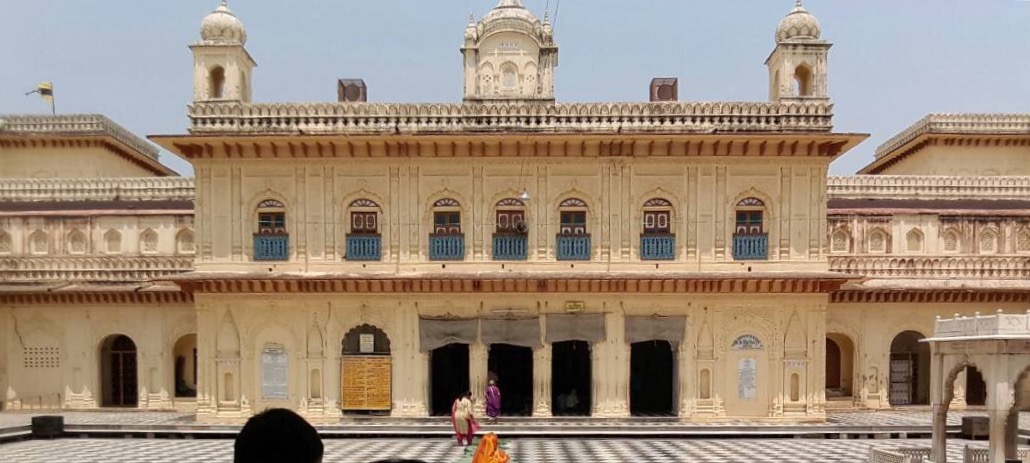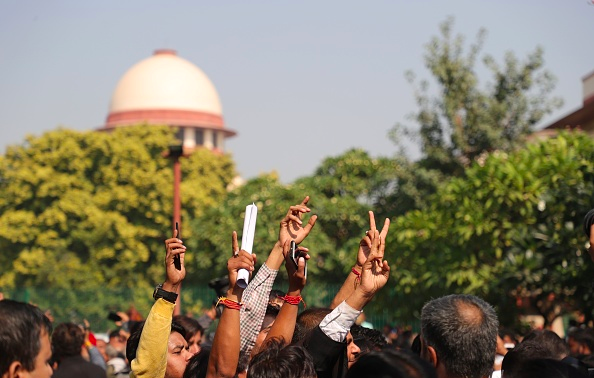
On November 9, India’s apex court ruled in favor of Hindu nationalist groups in a long-standing dispute over a contested holy site in Ayodhya, which Hindus believe is the birthplace of revered deity Ram and where Hindutva mobs demolished the 16th century Babri mosque in 1992. Hindus claim that the mosque occupied the birthplace of Ram and that the Mughals razed the temple to construct the Babri Mosque during Emperor Babur’s rule. The Supreme Court ruled that the disputed land be handed over to a government trust to build a Hindu temple, also ordering the government to grant five acres of land elsewhere in Ayodhya to the Sunni Waqf Board to construct a mosque. However, Jamiat Ulama-i-Hind—a leading organization of Islamic scholars in India—has filed a review petition against the Supreme Court’s (SC) verdict on the Ayodhya dispute, asserting that granting the disputed land in Ayodhya to Hindus is tantamount to rewarding them for the destruction of the Babri Masjid and the violence that ensued. The organization’s chief, Maulana Arshad Madani, has stated that the SC verdict is “not based on evidence and logic” and that Jamiat would challenge it legally.
The review petition has generated debates about the emerging influence of Hindutva within India’s judicial system, which, in ruling in favor of Hindu claims to the land in Ayodhya, conflates historical fact and religious belief. Leaders of Hindutva groups and political blocs, including the ruling Bharatiya Janata Party (BJP), believe India to be a country of Hindus and have legitimized and in some instances instigated and plotted hate crimes against India’s minority communities, especially Muslims – who form nearly 15 percent of the country’s population. The Ayodhya decision represents a legal victory for India’s Hindu nationalist factions and sets a dangerous precedent, contributing to a culture of fear and political insecurity for India’s largest minority group.
A Ruling Steeped in Historical Dispute
The Ayodhya decision represents a legal victory for India’s Hindu nationalist factions and sets a dangerous precedent, contributing to a culture of fear and political insecurity for India’s largest minority group.
Though the Babri Mosque-Ram temple controversy dates back to the mid-19th century, the real dispute began in 1949, after Hindus smuggled an idol of Ram into the mosque, generating a legal battle over who should control the site. This legal contest provoked a violent crisis in 1992 when hardline Hindu nationalists razed the mosque, sparking Hindu-Muslim riots across India that left over two thousand people, and mostly Muslims, dead. Ever since, this dispute has been a catchphrase in Indian politics, wielded especially by Hindu right-wing political parties – fueling identity politics and communal hatred.
Since the BJP became the ruling party in parliament in 2014, Muslims have been at the receiving end of Sangh Parivar (the family of Hindu nationalist organizations, to which the BJP is affiliated)-supported cow-vigilante groups and anti-Romeo squads. Calls for a nationwide National Register of Citizens (NRC) have caused greater insecurity among India’s Muslim population, as the exercise has drawn criticism for isolating India’s Muslim population. Most recently, the Indian cabinet approved a Citizenship Amendment Bill that would grant citizenship to non-Muslims facing persecution in Muslim-majority neighboring countries. The BJP has delivered on three major Hindu majoritarian promises since returning to power in May 2019: creating the NRC in the state of Assam, abrogating Article 370 and curtailing the semi-autonomous status of India’s only Muslim majority state, Jammu & Kashmir, and, now, constructing a Ram temple at Ayodhya. In passing legislation that aids a Hindu nationalist agenda and outright ignoring violence perpetrated against Muslims, the BJP has created a hostile environment for 14.2% of India’s citizens.

A Win for Hindutva
The decision fits squarely within the BJP’s overt Hindu nationalist agenda as the party has long portrayed the Babri masjid as a symbol of oppression of Hindus at the hands of the Muslim Mughal empire.
Indeed, an analysis of the SC judgment reveals that the verdict somewhat misaligned with evidentiary conclusions the court reached. For instance, while the court concluded that excavations by the Archaeological Survey of India (ASI) at the site revealed the “existence of a pre-existing underlying structure dating back to the twelfth century” symbolic of temple architecture, it also states that the report does not provide the reason for the destruction of the pre-existing structure and that there was no evidence to suggest this “structure was demolished for the purpose of the construction of the mosque.” While the court determined that “a finding of title cannot be based in law on the archaeological findings which have been arrived at by ASI,” no evidence indicates the existence of a temple specifically. The court thus contradicted itself in favoring construction of the Ram temple anyway.
The court also weighed Muslim and Hindu interests in an imbalanced manner. It required that Muslims prove their exclusive possession of the land without calling for Hindus to do the same. Although the court deemed destruction of the mosque by Hindu mobs illegal, it not only green lighted the building of a Ram temple, but, in a glaring omission, also sidestepped any discussion about penalties against those involved in demolition of the mosque and suggestions to expedite the ongoing trials of those involved in post-demolition bloodshed against Muslims. Many of the chief accused in these cases are prominent members of the BJP.
As such, instead of depoliticizing the dispute, the verdict has advanced the interests of majoritarian Hindu nationalists who want to transform India into a Hindu Rashtra. It has also set a dangerous precedent by validating faith-based violence, especially in the backdrop of existing communal tensions in India. In the past, Hindu nationalists have prepared a list of “targets” of historical monuments in India named after Muslims, including mosques, to attack. Thus, the verdict could be seen by these groups as justification for further razing of mosques to make way for temple-building.
Instead of depoliticizing the dispute, the verdict has advanced the interests of majoritarian Hindu nationalists who want to transform India into a Hindu Rashtra. It has also set a dangerous precedent by validating faith-based violence, especially in the backdrop of existing communal tensions in India.
The Decision’s Implications for Indian Muslims
The verdict is likely to spell further trouble for India’s beleaguered Muslim community. While some Muslims have expressed support for Jamiat Ulama-i-Hind’s petition disputing the verdict, others fear that continuing the case will only intensify communal polarization and incentivize anti-Muslim propaganda and rising Islamophobia in India. Many Indian Muslims had hoped for a non-religious resolution to the dispute such as building a hospital, a school or an organization promoting inter-faith harmony—much like the Hagia Sophia in Turkey. These measured responses to the verdict underscore the extent to which the BJP has relegated India’s Muslims to second-class citizenship.
Muslims’ silence appears in many ways dictated by fear and political insecurity. Commentators have referred to it as an “unquiet silence.” Although many Muslims seem to have viewed the dispute not as a question of land (possession) but of self-respect and dignity, they likely fear they likely fear being labelled “anti-national” for questioning the supreme court’s judgement, and indeed believe it would be disrespectful to the court’s integrity to do so. Dismal political representation exacerbates these insecurities—since the rise of Hindutva politics, the number of provincial and federal legislators from the Muslim community has dipped significantly. The decision has only further entrenched Indian Muslims’ sense that they are unwanted and defenseless in their own country.
India’s Fracturing Pluralism
India has been the birthplace of many faiths, including Buddhism, Sikhism and Jainism among its minority religions. The country is also a melting pot for different ethnic groups. The Indian polity’s DNA lies in this composite culture of co-existence and inter-faith harmony. Current majoritarian attempts to single out the religious minorities could weaken the secular-liberal heritage of the Indian polity, which has been the hallmark of the largest democracy in the world since independence.
***
Image 1: Wikimedia Commons
Image 2: NurPhoto via GettyImages


